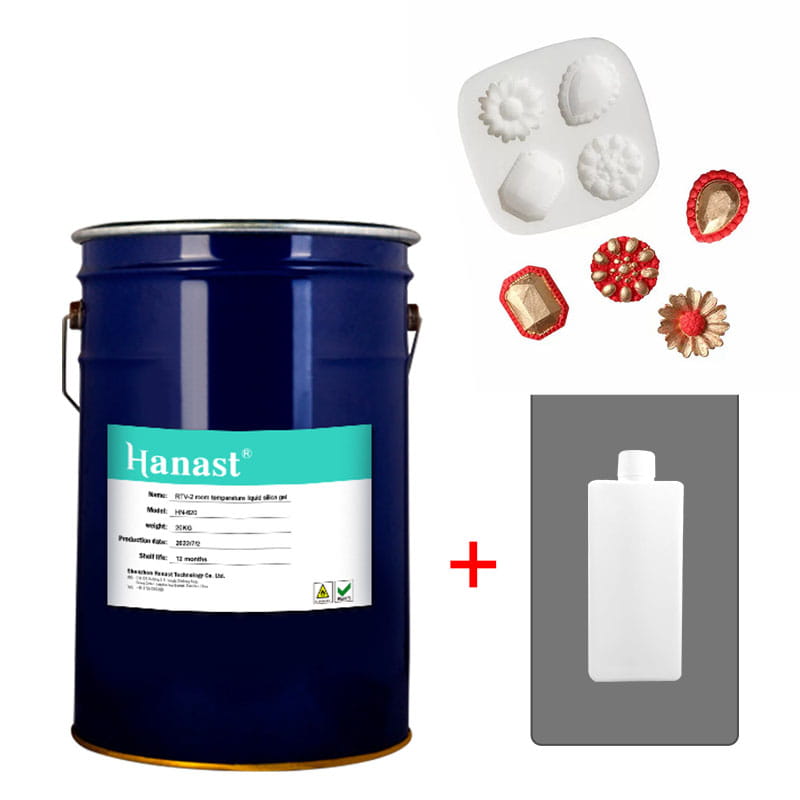What is the difference between liquid addition silicone and liquid condensation silicone?
 Apr 13,2023
Apr 13,2023

 Hanast
Hanast
Liquid silicone rubber is a type of organic silicone compared to mixed semi solid silicone rubber and common room temperature vulcanized single component silicone. It is a liquid rubber that has good sulfur mobility, fast vulcanization, and can be poured or injection molded.
Liquid silicone rubber is divided into addition molded liquid silicone and condensed type liquid silicone.
Additive liquid silicone: Additive liquid silicone rubber is a polymer based on vinyl containing polysiloxane. Before vulcanization, the viscosity of the additive silicone rubber material is low, making it easy to pour. During vulcanization, it does not release heat, and there are no low molecular by-products released. The shrinkage rate is small, and it can be deeply vulcanized, making the operation simple. After vulcanization, it becomes a soft, transparent or semi transparent elastomer that can maintain elasticity for a long time within the temperature range of -50 ℃ to 200 ℃. Additive liquid silicone is a higher grade variety of silicone rubber, which has advantages such as vulcanization and better sealing performance at high temperatures than condensed silicone. It has excellent electrical performance and chemical stability, water resistance, ozone resistance, radiation resistance, weather aging resistance, hydrophobicity and moisture-proof, shock resistance, good low compression deformation and low combustion; It has the advantages of physiological inertness, non-toxic, odorless, and the vulcanization rate can be smoothly controlled by temperature.

Condensed liquid silicone: The sulfurization reaction of condensed liquid silica gel requires two conditions to be met, which require moisture in the air and a catalyst to promote the reaction. Usually, the rubber material and catalyst are packaged as one component separately. Curing only begins when the two components are completely mixed together. The vulcanization time of two-component condensation type room temperature vulcanized silica gel mainly depends on the type, dosage, and temperature of the catalyst. The more catalyst is used, the faster the sulfurization occurs, and the shorter the shelf life. Condensed liquid silicone can be cured at room temperature (25 ℃) and can form an elastomer after 8 to 24 hours. In order to accelerate the speed, the amount of curing agent can be increased. The increase or decrease of curing agent, as well as temperature and temperature, are factors that affect the curing rate.




 Home
Home

 How to use heat dissipation cream?
How to use heat dissipation cream?  You May Also Like
You May Also Like







 Tel
Tel
 Email
Email
 Address
Address












